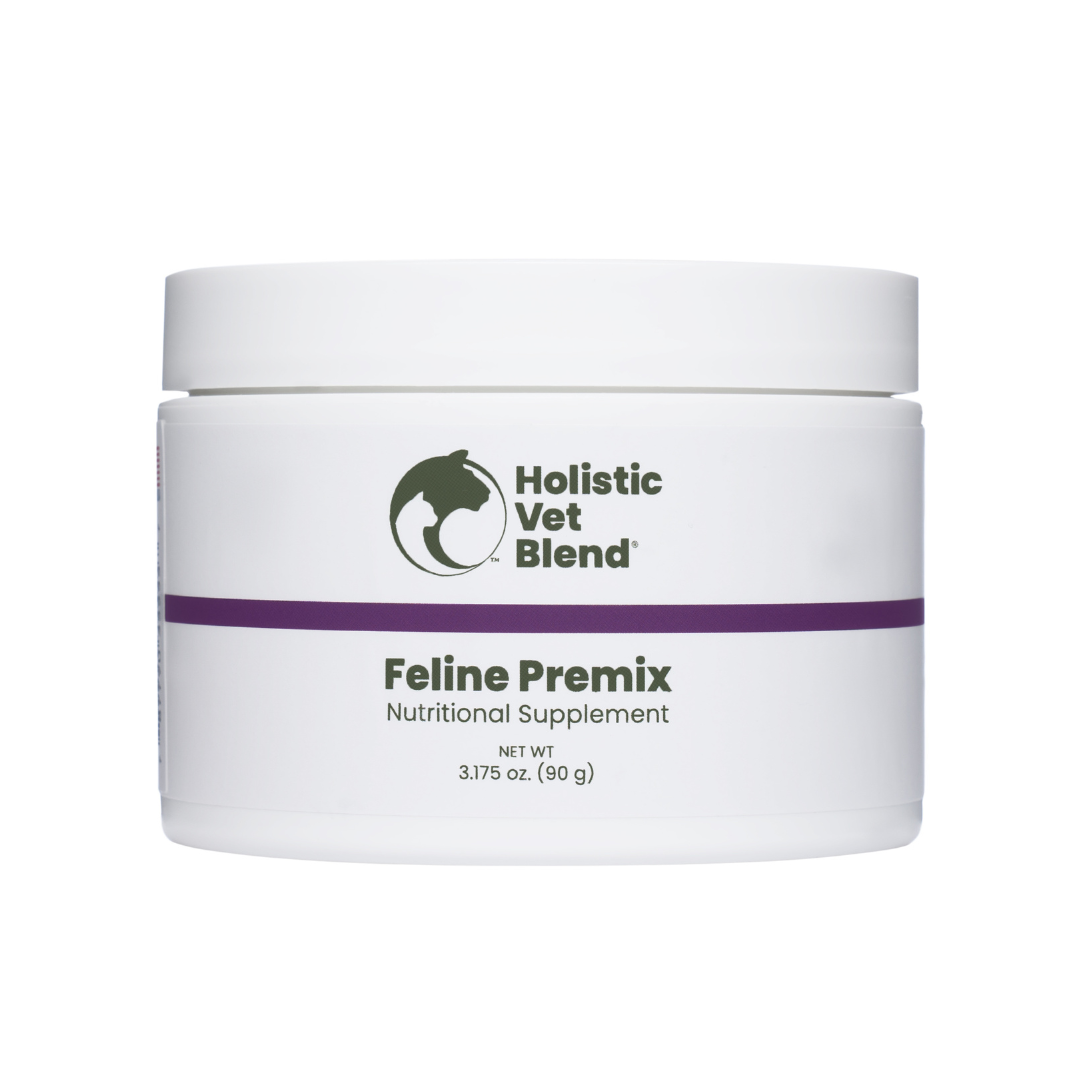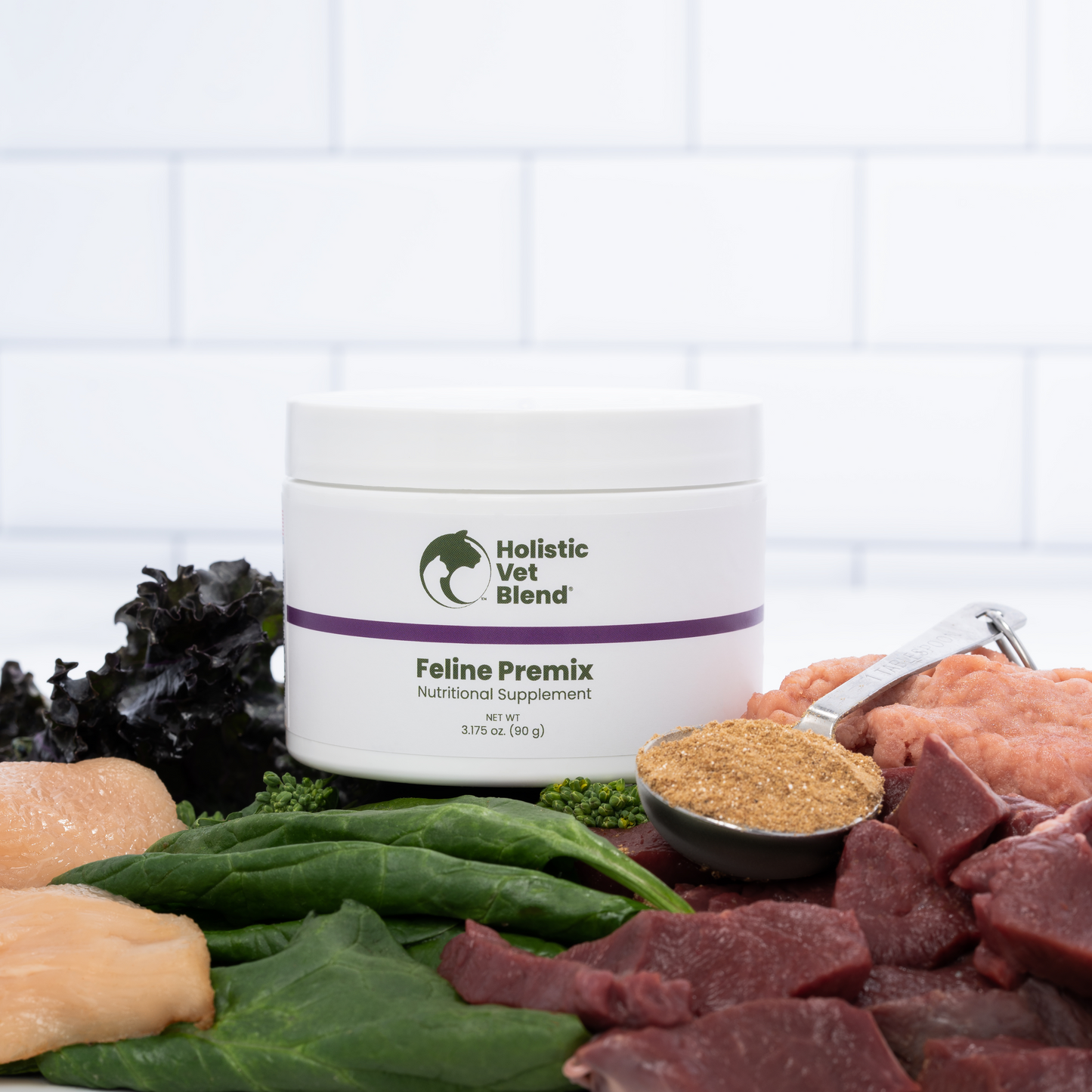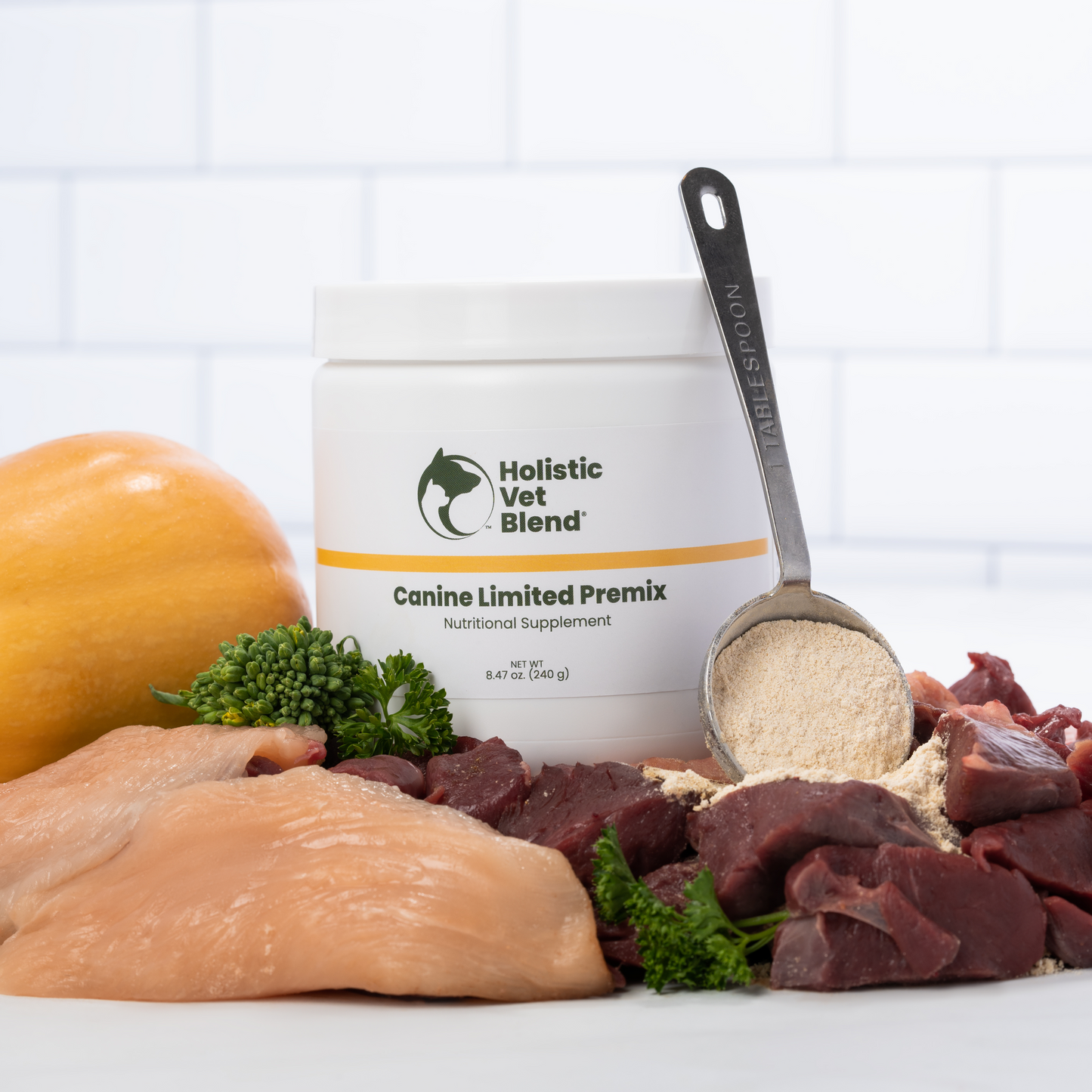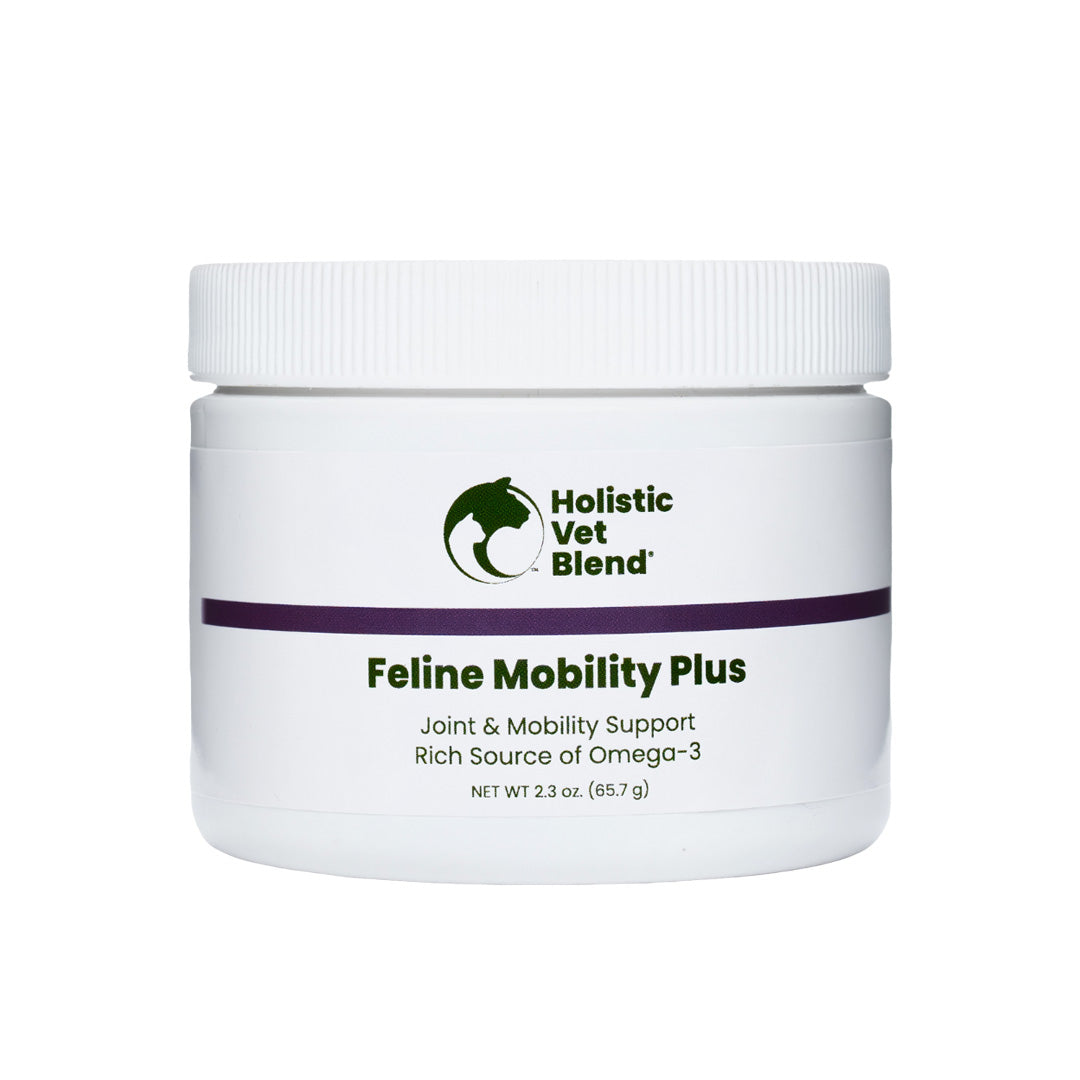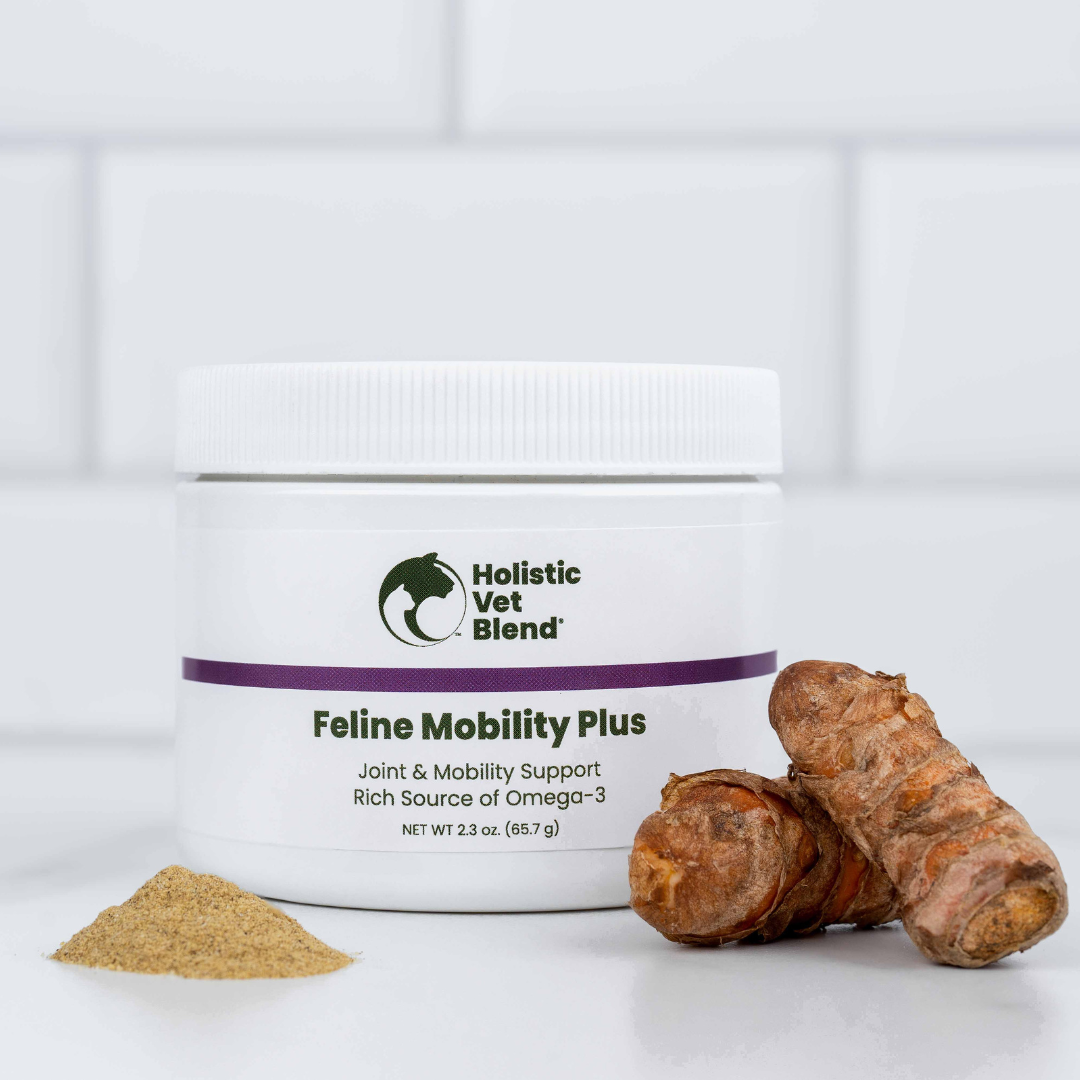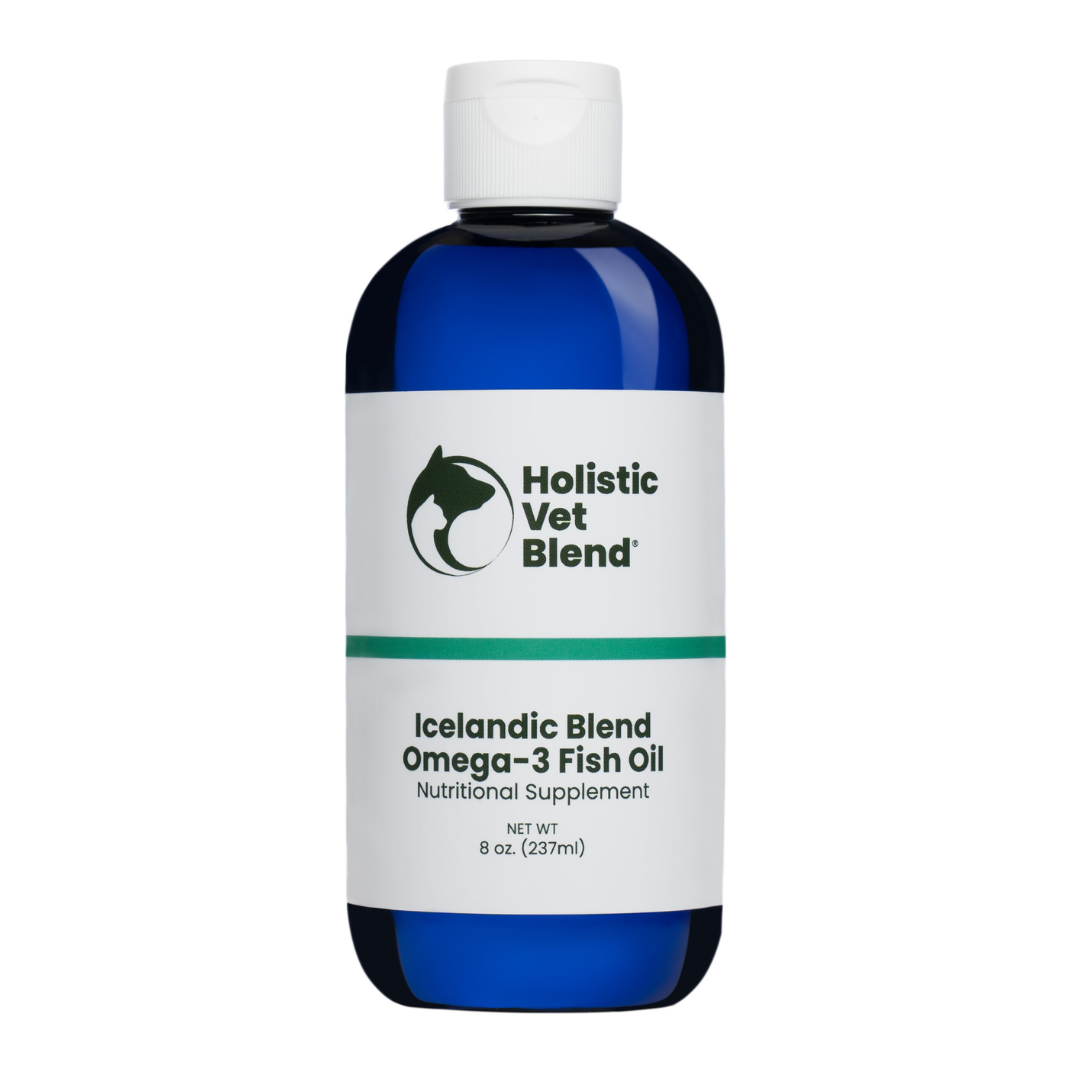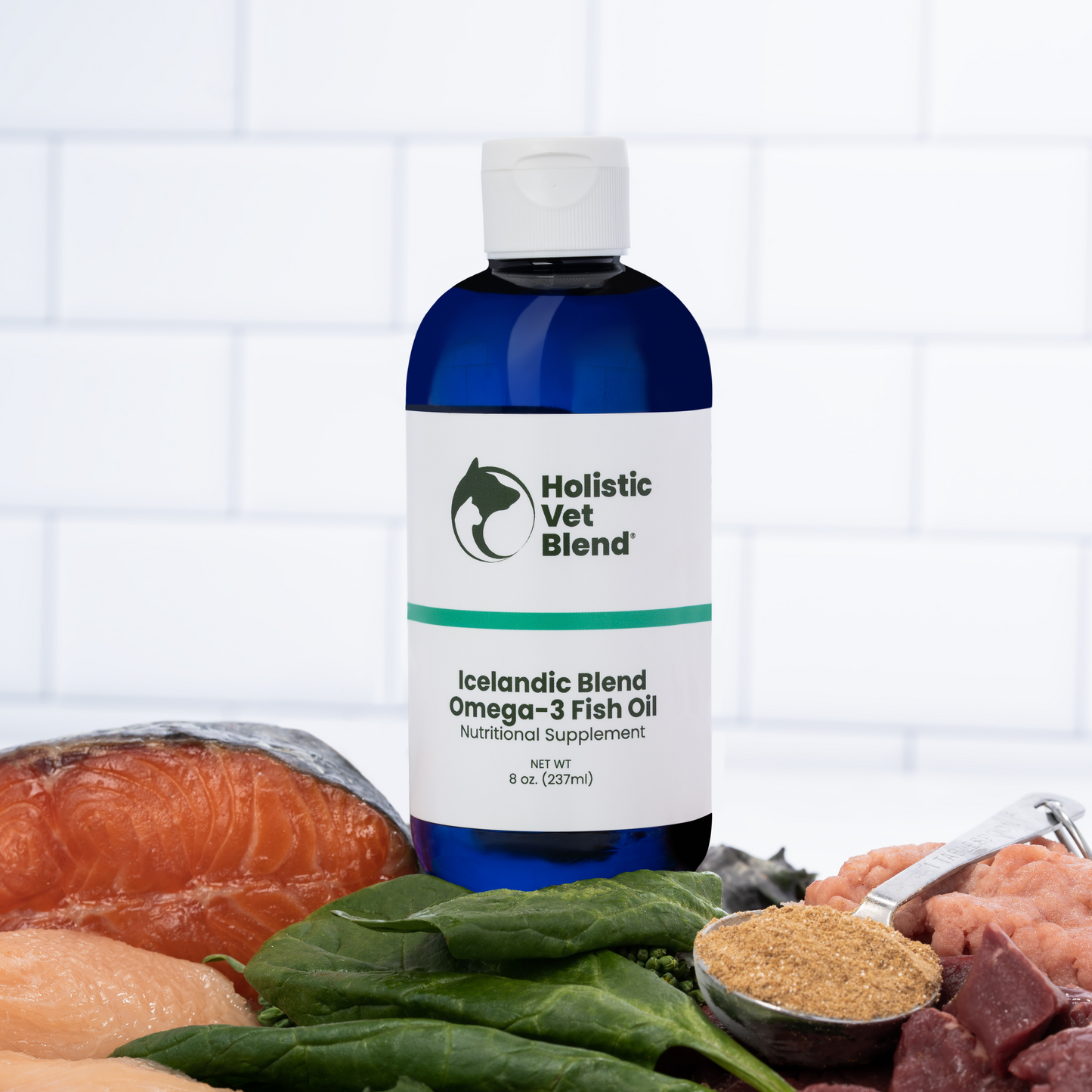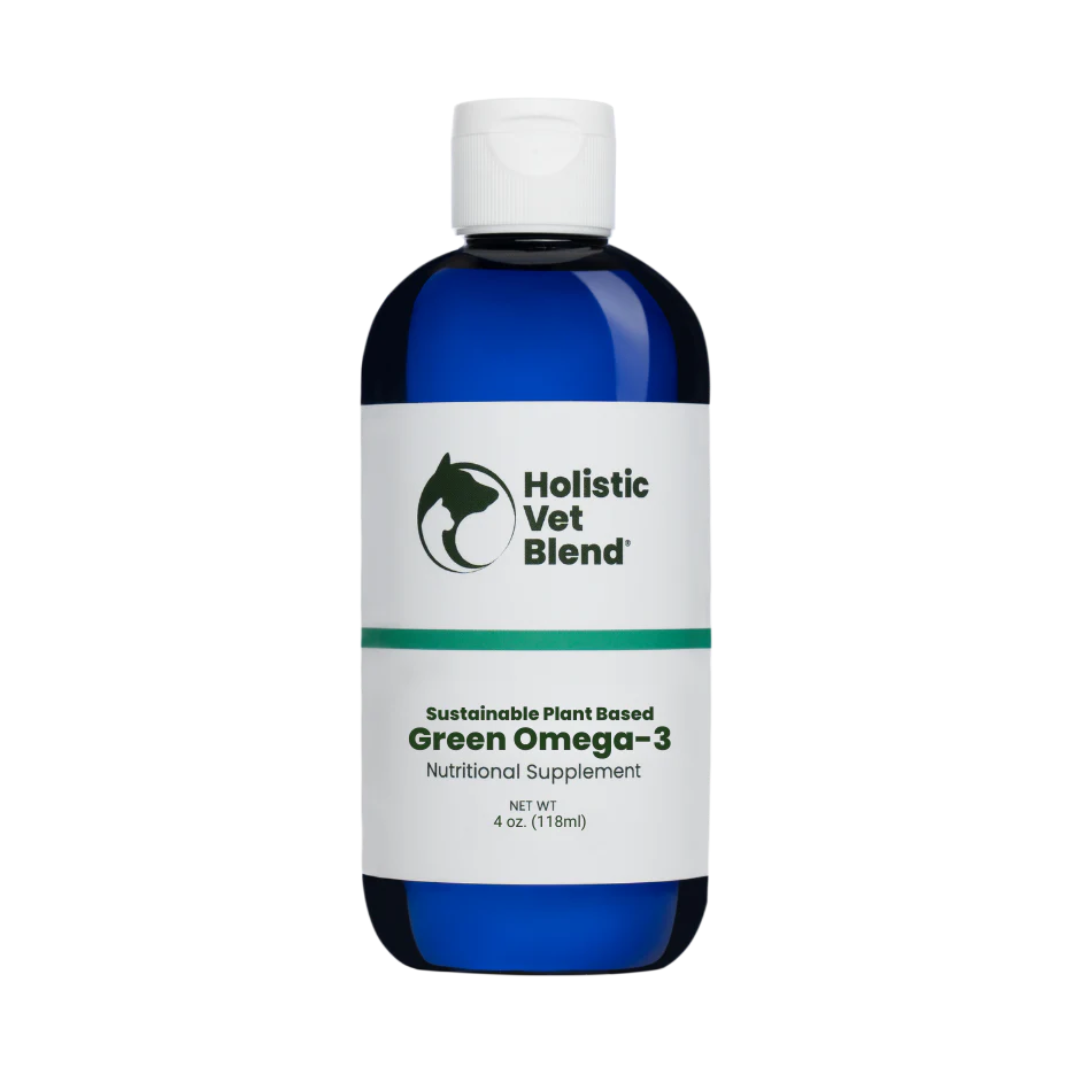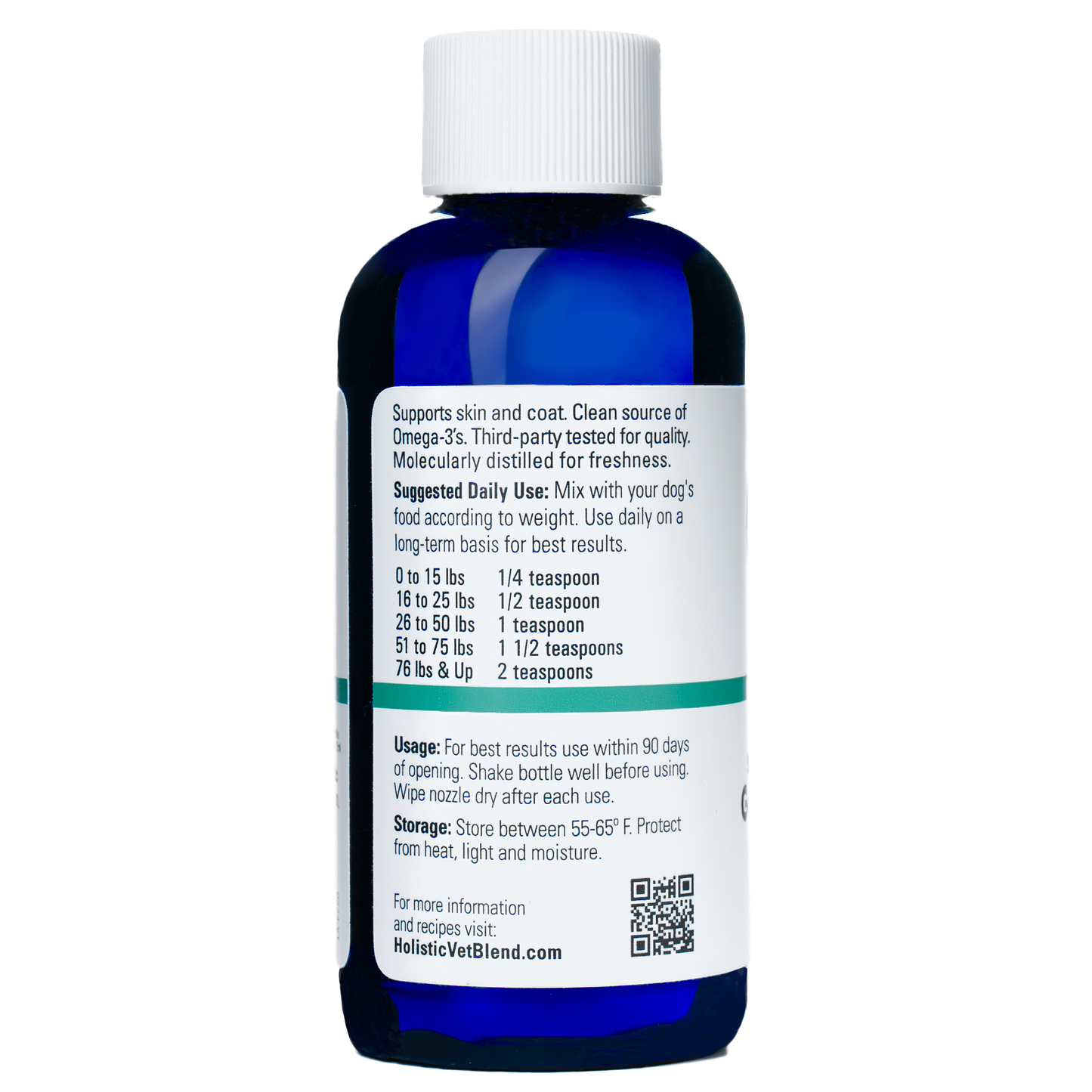
Introduction
Think your cat’s just slowing down? Think again.
If they’ve stopped jumping on the counter, climbing to high places, or playing like they used to—it’s not good behavior or old age. It’s likely arthritis. Most cats with chronic joint pain never limp or cry out. They suffer quietly, and we miss it. As an integrative vet, I’m here to show you the early signs to watch for—and the least invasive, most natural ways to help them feel better now.
Why This Matters
Up to 92% of cats over age 12 show signs of degenerative joint disease (DJD), also known as feline arthritis, on radiographs. Often, symptoms of arthritis are missed because cats hide chronic pain. These aren't just "older cats" slowing down—they are arthritic cats dealing with a progressive disease that impacts their daily activities and overall quality of life.
Cats rarely show obvious signs like limping. Instead, subtle signs such as avoiding high places, urinating outside the litter box, or changes in cat behavior are more telling indicators of joint pain. Waiting for severe pain before intervening means your cat has been silently suffering for too long.
A Natural First-Line Approach to Feline Arthritis
An integrative plan focuses first on lifestyle, nutrition, and natural pain relief before introducing medications. Every treatment plan should aim to improve joint health, support joint fluid integrity, and protect against further joint changes.
1. Environmental Comfort
Small adjustments can make life easier for arthritic cats:
- Add ramps or steps to high places
- Provide low-entry litter boxes and wide water bowls for easy access
- Offer padded beds in quiet areas
- Offer scratching posts near resting areas as they will stretch after a nice nap.
Vet Tip: An arthritis-friendly home reduces stress and protects range of motion.
2. Anti-Inflammatory Nutrition
The right diet helps manage inflammation and supports joint fluid production. Look for:
- Fatty acids (EPA/DHA) to reduce inflammation
- Antioxidants like vitamins C & E
- Glucosamine, MSM, green-lipped mussel
Recommended: Feline Mobility by Holistic Vet Blend—a clean, holistic formula for cat arthritis made with human-grade ingredients.
3. Cold Laser Therapy
Cold laser therapy (also known as photobiomodulation) promotes healing by increasing blood flow and reducing inflammation.
- Shown to improve mobility in arthritic cats
- Non-invasive and well tolerated
Research-based: Laser therapy enhances range of motion and decreases arthritis pain without drugs.
4. Acupuncture & Physical Rehabilitation
- Acupuncture helps reduce chronic pain by releasing endorphins and improving energy flow.
- Physical therapy techniques and physical rehabilitation help preserve muscle and joint flexibility.
- Short, daily play sessions encourage mobility and mood.
Vet Tip: Therapy must be gentle and adapted to your cat's temperament.
5. PEMF
- PEMF therapy stimulates cell healing and circulation.
- Red light therapy reduces stiffness and discomfort.
Home-safe, drug-free, and compatible with other therapies.
6. Weight Loss & Movement
Overweight cats are more likely to develop arthritis. A healthy weight is crucial for joint health:
- Feed smaller portions or use puzzle feeders
- Encourage light movement with toys or food games
Even modest weight loss can improve mobility and quality of life.
7. Homeopathics
You can learn more about the two most common homeopathics for cats here. You can watch a video on how to give a homeopathic here: DIY Natural Pain Relief for Cats
- Rhus Toxicodendron: for cats that are stiff when waking up but move better once they get going
- Arnica: for acute muscular pain or soreness
When Pain Persists: Medication with Caution
If natural options aren’t enough, consider these pain management options:
- NSAIDs: Use cautiously and only under veterinary supervision; they are a class of medication that can strain the kidneys.
- Gabapentin or tramadol: May reduce joint pain, but sedation is a common side effect.
- Frunevetmab (Solensia): A newer drug that blocks nerve growth factor, helping reduce arthritis pain. Watch for adverse reactions like injection site pain or skin issues.
- Monoclonal antibodies: Still under evaluation for long term safety.
Medications should complement—not replace—a holistic treatment plan. Kidney and liver function should be monitored regularly with blood work when these are part of the treatment plan.
The Holistic Takeaway
Don't wait for obvious signs of arthritis.
Support your cat early with nutrition, comfort, and natural therapies.
Layer in pain medications carefully and only when needed.
When in doubt, start with what supports the whole body. Every step you take today can help your cat age with dignity and less pain.
Ready to Support Your Cat, Naturally?
Try Feline Mobility by Holistic Vet Blend—a vet-developed supplement to help aging cats feel like themselves again.
- Clean ingredients
- Vet-backed nutrition
- Part of a natural, effective arthritis care plan
September is Pain Awareness Month. Now is the perfect time to give your cat a better quality of life.
How do I know if my cat has osteoarthritis?
One of the most telling signs of arthritis pain in cats is when you see a change in their usual cat behavior. It's more about what they are NOT doing than observing limping for example in a dog.
Look for these clear changes in their behavior:
- Not wanting or seeming unsure about jumping up or down from furniture.
- Spending less time grooming, which can cause the coat to look messy or get matted.
- Finding it hard to use the litter box, and sometimes going to the bathroom outside/near the box.
- Avoiding contact, possibly more irritable or even aggressive when you touch or come close to them.
- Sleeping more often, or picking spots to rest that are lower to the ground and easier to get to.
- In some cases decreased appetite.
Physical Symptoms to Watch For:
While you may see changes in how your cat acts, some cats also show clear signs of arthritis. The physical symptoms of arthritis can be more easy to notice as the problem gets worse or during times of severe pain. Watching how your cat moves can help you spot problems with their joint health.
Stiffness is a common sign. It often shows up after your cat has rested or taken a nap. You may see your cat move more slowly or be careful when getting up. Gentle movement can help this stiffness get a bit better. If your cat does not move its legs or back as much as before, that may also be a clear sign of discomfort.
Here are some main physical signs to watch out for:
- Lack of grooming, clumps of hair along the spine.
- Limping or favoring one leg while walking.
- A stiff or awkward way of walking.
- Visible swelling in the joints.
- Muscle loss, especially in the back legs.
- Less height in the jumps your cat makes.
How do vets confirm my cat has arthritis?
A veterinarian will begin with a thorough physical examination to assess your cat’s joints and mobility. During this physical exam, they will gently manipulate your cat's limbs and spine to check for pain, swelling, and any decrease in the normal range of motion. They will also listen for a grating or clicking sound (crepitus) within the joints as the cat moves.
To get a definitive diagnosis, imaging tests are required. X-rays are the standard tool used to visualize the bones and joints. This imaging allows the veterinarian to see concrete evidence of arthritis, such as narrowed joint spaces, bone spurs, or other signs of joint damage. In some cases, a vet might collect joint fluid for analysis to rule out other causes of joint inflammation, like an infection.
A trial of pain medication may also be suggested to see if your cat's mobility and behavior improve, which can help confirm that pain is the underlying issue.
|
Diagnostic Step |
What the Vet Looks For |
|---|---|
|
Medical History Review |
Owner's report of behavioral and mobility changes. |
|
Thorough Physical Examination |
Joint pain, swelling, decreased range of motion, crepitus (grating sound). |
|
Imaging (X-Rays) |
Narrowed joint space, bone spurs, soft tissue swelling, signs of bone-on-bone friction. |
|
Pain Medication Trial |
Improvement in symptoms, confirming pain as the root cause. |
References
- Lascelles BDX, et al. Prevalence of radiographic signs of OA in older cats. J Feline Med Surg. 2010. Stadig SM, et al. Effects of low-level laser therapy on feline OA. Am J Vet Res. 2017.
- Stadig SM, et al. Effects of low-level laser therapy on feline OA. Am J Vet Res. 2017.





